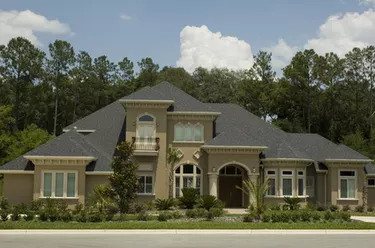
Banks and financial institutions loan money to prospective homeowners to buy houses. These loans are called mortgages. The lender mortgaging the home places a lien on the home until the buyer pays back the loan in full.
Amount
Video of the Day
Banks and finance companies determine the size of the borrower's monthly mortgage payment by considering the amount of the loan, the interest rate and the duration of the loan. Payments during the first few years of an amortized mortgage loan go mostly to pay interest on the loan with a small percentage going toward repaying the loan.
Video of the Day
Time Frame
Homebuyers typically can repay fixed-rate loans over the course of 15 years or 30 years. Mortgage-holders submit one required payment each month on the same date. Homeowners can pay loans off sooner by adding money to their monthly payments. According to the Bankrate website, paying an additional $25 a month on a mortgage loan of $165,000 at 6 percent interest could shorten the term by 23 months and save $14,734 in interest payments.
Types
Homebuyers have several other mortgage payment options. A balloon mortgage allows homebuyers to make set payments for three to seven years and then pay the loan balance in full at the end of the term. Interest-only loans allow homebuyers to pay only on the interest of the loan for a set amount of time. They begin repaying the loan when the interest-only term ends. A reverse mortgage loan allows homeowners to convert equity to monthly cash payments or a line of credit and is paid back when the home is sold or when the owner dies. Refinancing is a method of repaying a loan by obtaining another loan.